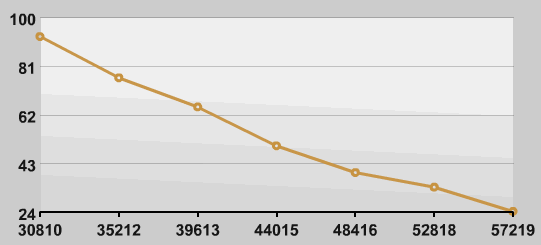wabmester
Thinks s/he gets paid by the post
- Joined
- Dec 6, 2003
- Messages
- 4,459
We all know that FIREcalc gives us the worst-case SWR, but I've always wondered about the range and distribution of SWRs too. So, I did a run trying to find the best case by asking FC to find the SWR with a 1% success rate. Turns out that the best case for the default settings is a withdrawal rate of about 10%.
I thought that was sort of interesting, but I've got to ask:
1) What happened to the output option that let me see the results of all the runs? At a minimum, I'd like to see the starting year of the worst-case sequence that FC found that matched my success rate criterion.
2) Asking FC to find the 1% success rate result is basically equivalent to asking it to find the best case withdrawal. So, how about adding an option that searches for the best-case SWR and displays the range and distribution of all the SWRs it found along the way? I think this would be more informative than displaying a single result for the 95% case, for example. And it shouldn't be any more computationally expensive than what FC already does.
I thought that was sort of interesting, but I've got to ask:
1) What happened to the output option that let me see the results of all the runs? At a minimum, I'd like to see the starting year of the worst-case sequence that FC found that matched my success rate criterion.
2) Asking FC to find the 1% success rate result is basically equivalent to asking it to find the best case withdrawal. So, how about adding an option that searches for the best-case SWR and displays the range and distribution of all the SWRs it found along the way? I think this would be more informative than displaying a single result for the 95% case, for example. And it shouldn't be any more computationally expensive than what FC already does.

